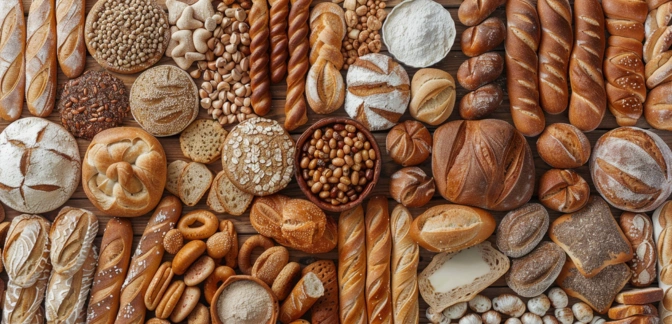Potato Starch — Nutrients, Health Benefits, And Shopping Tips

Written by Listonic Team
Last update on September 4, 2024
Potato starch nutrients
Nutrition facts
Amount per 100 g
Calories
🔥 333 kcal
| Nutrition per: 100 g | Value | % Daily Value* |
|---|---|---|
| Carbs | 83 g | 30.18% |
| Fiber | 1 g | 3.57% |
| Sugars | 0 g | - |
| Glycemic Index | 95 | - |
| Protein | 0 g | - |
| Sodium | 6 mg | 0.26% |
| Total Fat | 0 g | - |
*The % of Daily Value (DV) tells you how much a nutrient in a serving of food contributes to a daily diet. 2,000 calories a day is used for general nutrition advice.
Potato starch facts & tips
Health benefits
- Gluten-free, making it suitable for individuals with celiac disease or gluten intolerance.
- High in resistant starch, which acts as a prebiotic, promoting the growth of beneficial gut bacteria and supporting digestive health.
- Low in fat and protein, providing a pure source of carbohydrates for energy.
- Versatile thickening agent for soups, sauces, and gravies, enhancing the texture of various dishes.
Health risks
- High carbohydrate content which can cause rapid spikes in blood sugar levels, particularly concerning for diabetics or those on low-carb diets.
- Low nutrient density as potato starch offers limited vitamins and minerals compared to whole potatoes.
- Potential for digestive discomfort such as bloating or gas when consumed in large quantities, particularly if not properly hydrated or mixed with other ingredients.
- Potential for overuse in cooking and baking, leading to excessive intake of refined carbohydrates and potentially contributing to weight gain.
How to choose potato starch
Potato starch should be fine and powdery with a bright white appearance, ensuring it is pure and hasn't absorbed any moisture. The texture should be light and airy, easily dispersible in liquids.
Avoid potato starch that clumps together or has a yellowish tint, as this can indicate exposure to moisture or age. Starch that smells musty or stale should also be avoided, as it will not function effectively as a thickener.

How to store potato starch
Potato starch should be stored in an airtight container in a cool, dry place. Keep it in the pantry to maintain its quality and prevent clumping. Properly stored, potato starch can last for several months.
Exposure to moisture can cause potato starch to clump and spoil. Avoid storing it near heat sources or in humid environments. Always ensure the container is tightly sealed to keep out moisture and maintain its effectiveness.
✅ Extra Tip
How long does it last?
Potato starch can last indefinitely when stored in an airtight container in a cool, dry place. Proper storage helps maintain its quality and effectiveness.
What to do with leftovers?
Leftover potato starch can be used in a variety of culinary and non-culinary ways. In the kitchen, potato starch is a versatile thickening agent that can be used in soups, sauces, gravies, and puddings. It’s also useful for coating foods before frying, giving them a crispy texture. Potato starch is often used in gluten-free baking as a substitute for flour.
Beyond cooking, potato starch has several practical uses. It can be used in DIY beauty treatments, such as mixing it with water to create a soothing face mask that helps absorb excess oil. Potato starch can also be used as a natural dry shampoo, helping to absorb oil from the scalp and freshen up hair. Additionally, potato starch can be used in crafting to create homemade play dough or mixed with water to create a non-Newtonian fluid for fun science experiments with kids. It can also be used as a natural remedy for soothing skin irritations or rashes when applied as a paste.
👨⚕️️ Medical disclaimer
Discover products from other categories
Listonic Team
Fact-checked
Our editorial team checked this article to make sure it was accurate at the time of publishing it.
Get the top-rated shopping list app

potato starch
1 piece
Outline







